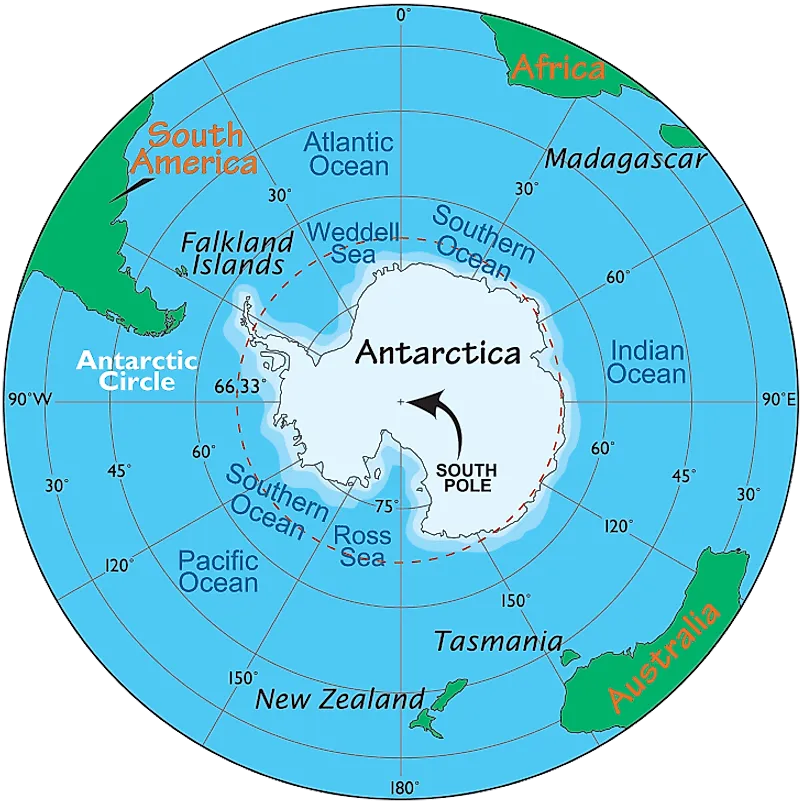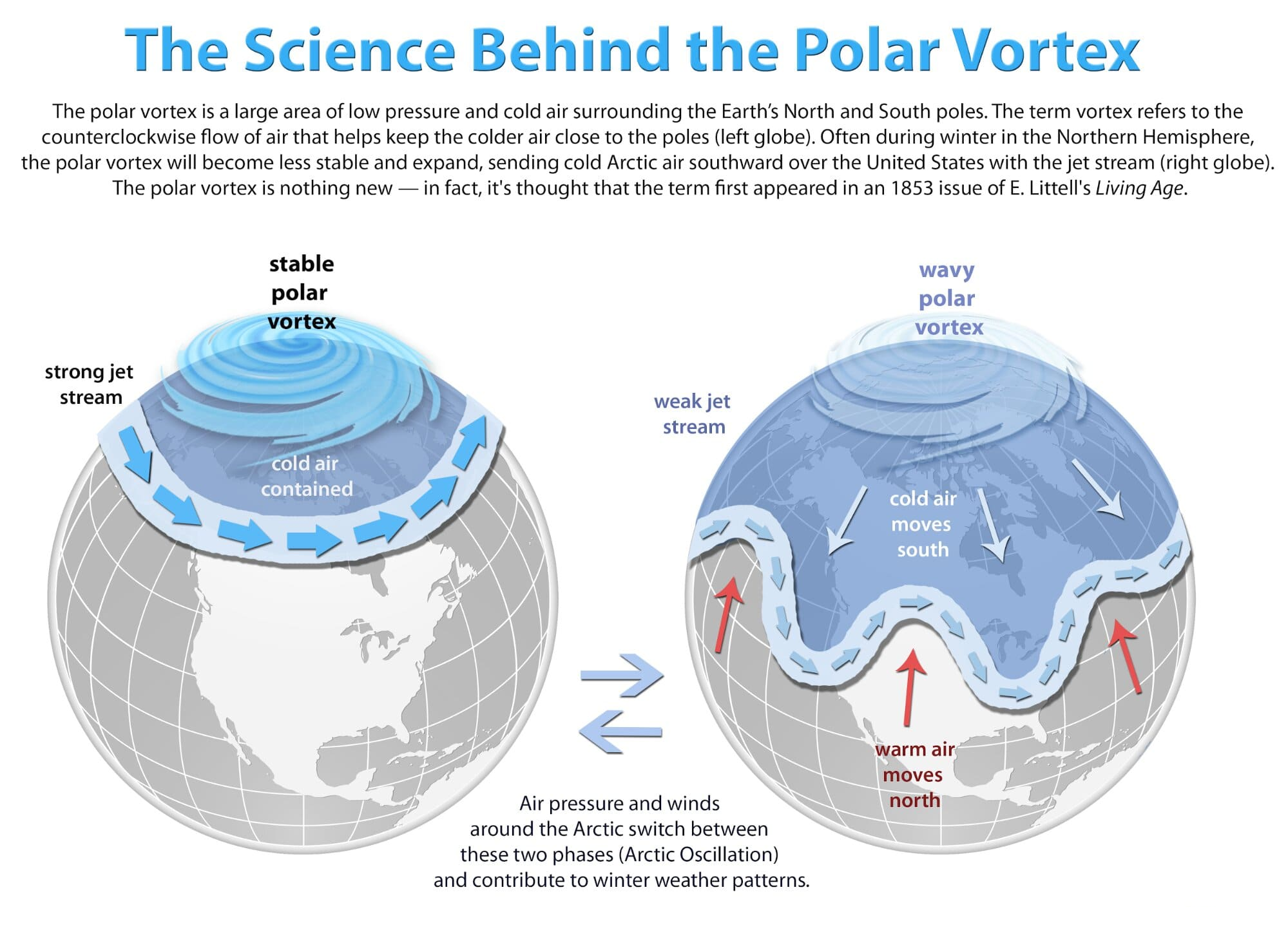Antarctica's Deep Winter Heatwaves | 12 Aug 2024
Why in News?
Recently, Antarctica has been experiencing a significant deep-winter heatwave, marking the second instance of record-breaking temperatures in two years.
- Ground temperatures have risen by an average of 10 degrees Celsius above normal since mid-July 2024, with some areas experiencing increases of up to 28 degrees Celsius.
What are the Causes of Deep-Winter Heat Waves in Antarctica?
- Weakening of the Polar Vortex:
- The polar vortex (also known as polar pig) is a large area of low pressure and cold air surrounding both of the Earth’s poles.
- The term "vortex" refers to the counterclockwise flow of air that helps keep the colder air near the Poles. It always exists near the poles, but weakens in summer and strengthens in winter.
- Higher temperatures and powerful atmospheric waves (periodic disturbances in the fields of atmospheric variables) disrupted the vortex.
- This allowed cold air to escape and warm air from above to descend. The arrival of this warm air led to a rise in temperatures in the region.
- The polar vortex (also known as polar pig) is a large area of low pressure and cold air surrounding both of the Earth’s poles.
- Reduction of Antarctic Sea Ice:
- Antarctic sea ice has reached historically low levels, reducing its ability to reflect solar energy and act as a barrier between cold air and warmer waters. This loss contributes to rising global temperatures.
- High Rate of Global Warming:
- Antarctica is experiencing warming at a rate nearly double that of the global average, estimated at 0.22 to 0.32 degrees Celsius per decade.
- As per IPCC estimates Earth as a whole is warming at the rate of 0.14-0.18 degrees Celsius per decade.
- This accelerated warming is primarily driven by anthropogenic climate change, which exacerbates the effects of natural climate variability.
- Antarctica is experiencing warming at a rate nearly double that of the global average, estimated at 0.22 to 0.32 degrees Celsius per decade.
- Impact of the Southern Ocean:
- The warming Southern Ocean absorbs more heat due to reduced sea ice, creating a feedback loop that raises air temperatures over Antarctica and increases the risk of extreme weather events.
What are the Consequences of Heat Waves in Antarctica?
- Accelerated Ice Melt: Antarctica's rising winter temperatures are accelerating ice mass loss, with recent decades seeing a 280% increase compared to the 1980s and 1990s.
- In March 2022, a heat wave caused a section of ice of around 1300 square kilometres to collapse, highlighting the significant risk of rising global sea levels.
- Global Sea Level Rise: The Antarctic ice Sheet covers 98% of Antarctica and contains over 60% of the world's freshwater.
- A slight increase of a few feet in sea levels could result in the displacement of around 230 million people residing within 3 feet of existing high tide lines, posing a significant threat to coastal cities and ecosystems.
- Disruption of Ocean Circulation: The influx of freshwater from melting ice alters the salinity and density of ocean waters, slowing down global ocean circulation.
- A 2023 study revealed that this slowdown weakens the ocean's capacity to store and transport heat, carbon, and nutrients, which are essential for climate regulation. Reduced ocean circulation decreases heat and CO2 absorption, intensifying global warming and increasing the frequency of extreme weather events that affect ecosystems and human populations worldwide.
- Ecosystem Disruption: Temperature changes and ice loss disrupt local ecosystems, threatening species dependent on stable ice, leading to biodiversity loss and altering global food webs.
- For example species like polar bears and penguins rely on stable ice for survival.
- Feedback Loops: Melting ice reduces sunlight reflection (albedo effect), increasing heat absorption by oceans and land, which accelerates further ice melt, creating a feedback loop that worsens climate change.
- Albedo is an expression of the ability of surfaces to reflect sunlight (heat from the sun).
India’s Initiatives for Antarctica
UPSC Civil Services Examination, Previous Year Question (PYQ) :
Q. With reference to the water on the planet Earth, consider the following statements:(2021)
- The amount of water in the rivers and lakes is more than the amount of groundwater.
- The amount of water in polar ice caps and glaciers is more than the amount of groundwater.
Which of the statements given above is/are correct?
(a) 1 only
(b) 2 only
(c) Both 1 and 2
(d) Neither 1 nor 2
Ans: (b)



